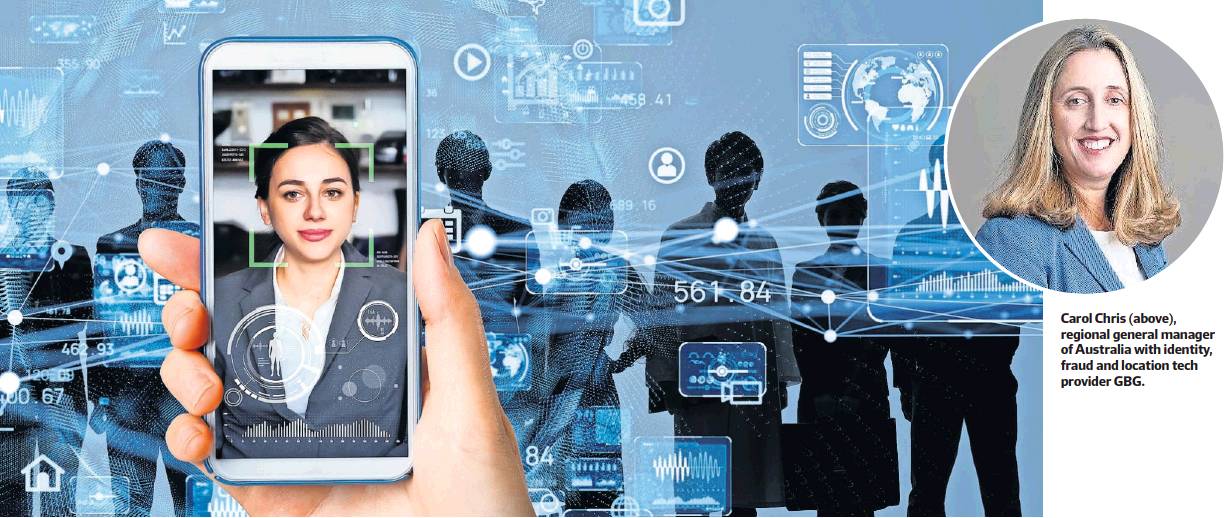A smoother way to onboard customers
Engaging with their customers from afar has forced many Australian organisations to accelerate their adoption of digital-first and mobile-first identity verification – not just to satisfy regulators, but also to offer a smoother user experience and drive business growth.
End-to-end digital identity verification confirms a new customer’s identity online in seconds, helping organisations detect false or stolen identities, first or third-party fraud and application fraud in real time. Beyond this, it is also a powerful tool for weeding out bad actors, helping identify stolen IDs, synthetic IDs, spoofing and deep fakes.
Improving accuracy while reducing application processing time and costs, digital identity verification is becoming a key tool in meeting anti-money laundering (AML), counter-terrorism financing (CTF) and know your customer (KYC) requirements. It is used when onboarding customers and clients in a growing range of sectors including government, financial services and wagering.
The coronavirus pandemic fast-tracked the adoption of digital identity verification, as digital channels became the only channels for many organisations that could no longer verify the identity of customers in person. At the same time, back-end staff have been unable to attend the office to manage traditional paper-heavy identity verification processes.
The impact was particularly felt in areas like lending, which have traditionally revolved around face-to-face interaction. Rather than relying on slow manual onboarding procedures, they have been forced to embrace streamlined and converged digital identity verification processes.
The shift to working from home, lockdowns and social distancing has also emphasised the need for businesses of all sizes to be able to securely onboard high volumes of new customers, such as wagering service providers during major events.
At the same time, the pandemic has been accompanied by a rise in fraud and scams, which requires both businesses and consumers to be more vigilant when it comes to identity verification.
As a result, Gartner predicts that 80 per cent of organisations will take advantage of documentcentric identity proofing as part of their onboarding workflows by 2022, a huge increase from about 30 per cent today.
By 2023, 75 per cent of organisations will rely on a single vendor, with strong identity orchestration capabilities and connections to many other third parties, for identity proofing and affirmation.
A robust digital identity verification platform goes beyond basic checks to also identify fake, forged or altered credentials using OCR document scanning and document authentication on mobile devices. It can also verify a customer’s identity on mobile devices using facial recognition and liveness detection.
While the threat of COVID-19 lockdowns may be starting to ease in Australia, allowing organisations to resume face-to-face interactions, digital identity verification will remain an important tool as customers come to expect mobile-friendly onboarding programs, says Carol Chris, regional general manager Australia for GBG, a technology provider of identity verification, fraud and compliance, and location data intelligence.
Some organisations were forced to scramble to adapt their customer onboarding to meet the challenges of the pandemic, Chris says, while others had already set off down the path. Those leading the way tend to view digital identity verification not just as a valuable way to streamline and transform key business processes, but also as a powerful tool for transforming the customer experience as well as enabling new business growth and retention.
‘‘Speaking to some of the major financial services organisations over the last few months, digital identity verification strongly aligns with the way they want to do business,’’ she says. ‘‘They want to build these capabilities in order to engage with customers on their own terms.
‘‘For example, as banks continue to close branches they are placing a greater emphasis on mobile-friendly services to ensure that the customer experience doesn’t suffer due to the reduced potential for face-to-face interaction.’’
Many organisations are embedding digital identity verification features into their own apps, to reduce friction.
‘‘They want to ensure smooth onboarding because they know how high the bar has been set when it comes to mobile-friendly customer experience,’’ Chris says. ‘‘New customers want to get down to business and can be impatient if signing up is a long and cumbersome process.
‘‘It’s vital to strike the right balance between compliance and customer experience in an increasingly competitive digital world where customers aren’t afraid to shop around.’’
While biometrics such as facial recognition have the potential to remove much friction, Chris warns that cumbersome liveness tests can lead to poor customer experiences.
‘Active’ liveness tests ask the user to perform a series of challenge-response actions in front of the camera, and can be slow to verify identities and awkward for users in public settings. Meanwhile, GBG takes advantage of ‘passive’ liveness single image technology, which conducts the necessary checks in the background without the user needing to do anything extra.
‘‘Our technology verifies individuals 10 times faster and reduces abandonment rates by up to 50 per cent in contrast to previous technology, taking advantage of artificial intelligence to ensure an accurate match,’’ Chris says. ‘‘It’s these kinds of advancements which allow organisations to keep improving their onboarding processes, to ensure they’re delivering the kind of experience customers have come to expect in the mobile-first age.’’
